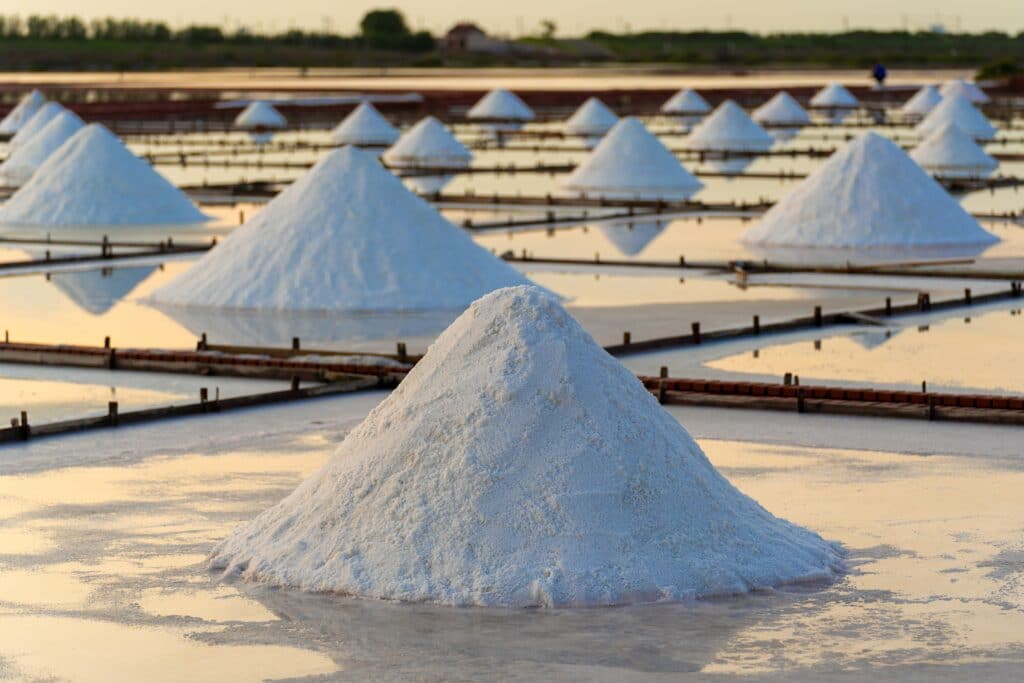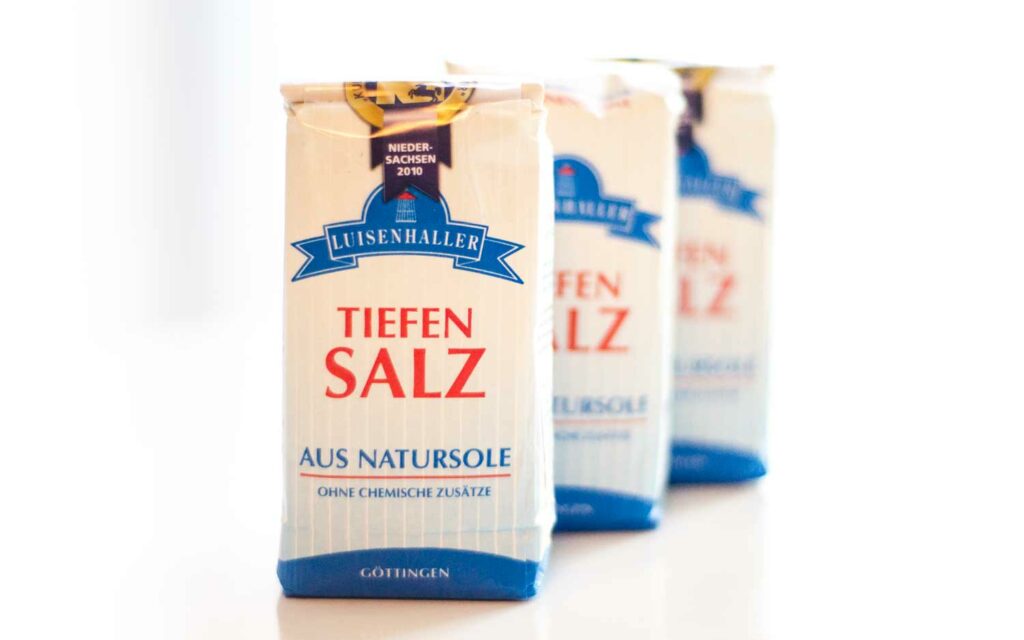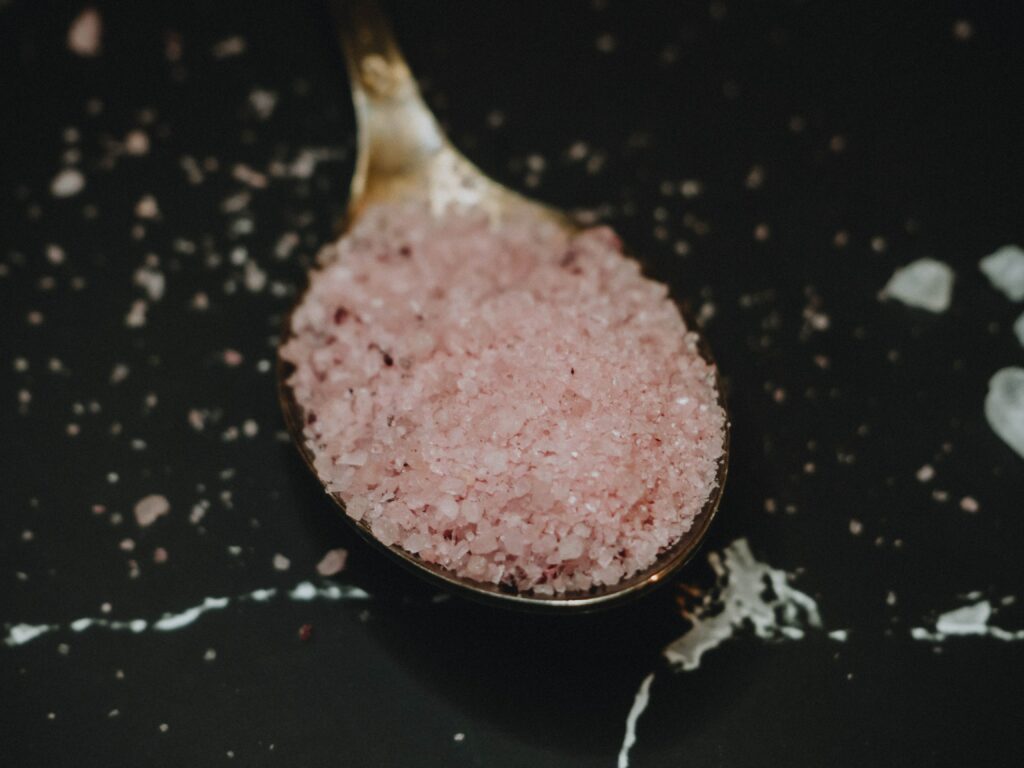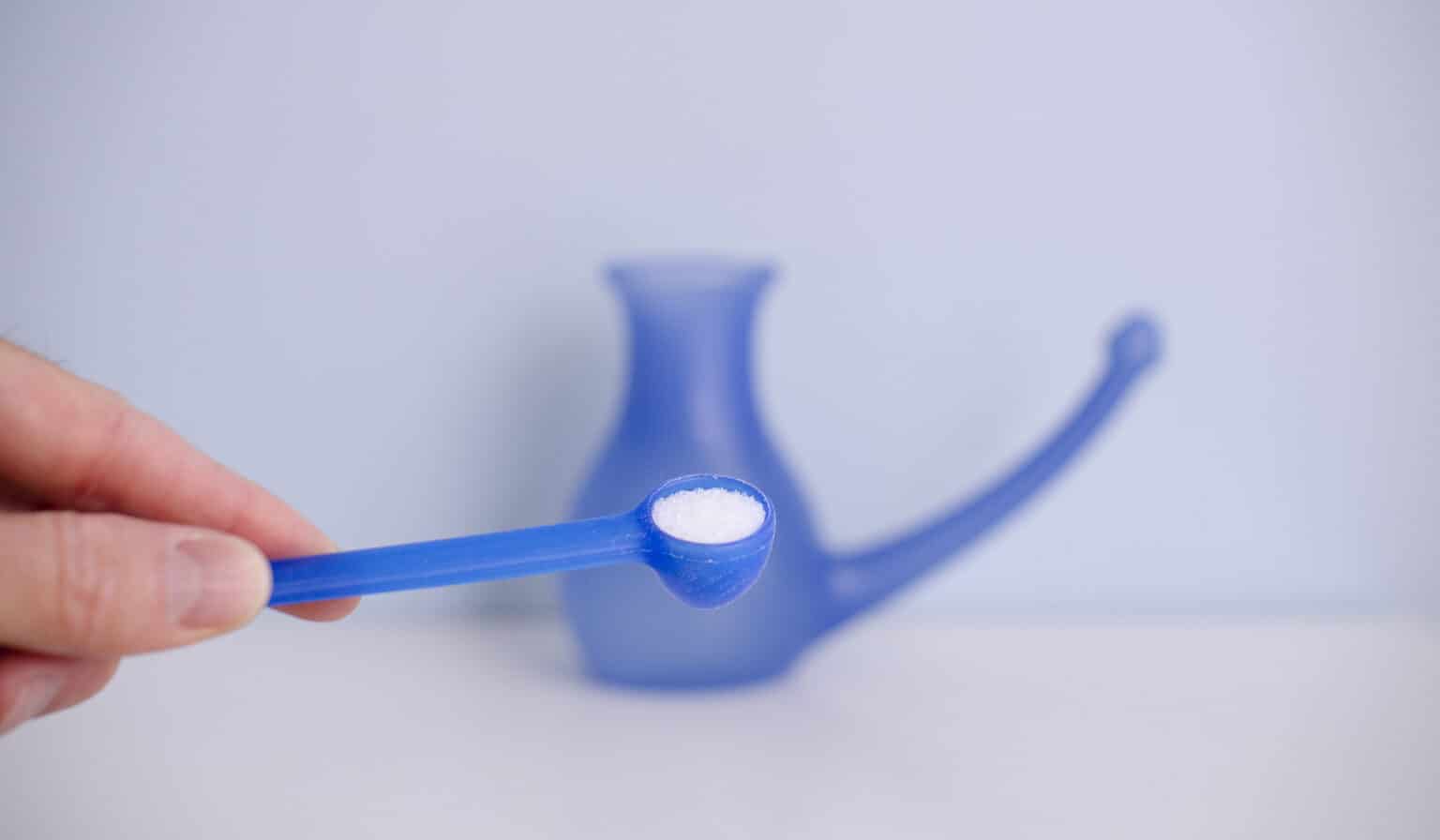Which type of salt is best for nose cleansing? The short answer is that you want to use ordinary salt that is as pure as possible. However, as you will see when you go salt shopping, you will be faced with so many different options. In this article, we will do a deep dive into the world of salt to find out what to use for your neti pot. I will discuss all options available.
Use regular sodium chloride for neti
Neti is a yogic nose cleansing method. With the help of a neti pot, called a lota, you rinse your nose with lukewarm saltwater. The best salt for nose cleansing is pure sodium chloride (NaCl) which is just plain salt with nothing else. Ideally, the grains should be tiny so that the salt dissolves easily.
If you don’t use salt in your rinsing water or use too much or too little, the rinse will be painful. But by preparing a lukewarm saline solution with exactly 0,9% salt, the experience can be quite pleasant.
Don’t use salt substitutes
Salt substitutes without sodium don’t work for neti, and there is no reason to use them. It is not healthy to overdo it with salt intake, but rest assured your body won’t absorb any from the saline solution you use to rinse your nose.
Choose a type of salt without anti-caking agents
Anti-caking agents like sodium ferrocyanide (E535) and potassium ferrocyanide (E536) are standard ingredients in table salt. They usually make up around 2% of the weight of the salt. Producers add them to prevent their products from lumping. An ideal neti salt should not contain these additives as they can produce allergies or irritations for some people. It is possible to find high-quality table salt without these additives.
Should you choose a salt without iodine?
In many countries, governments encourage salt producers to add iodine to their products for public health reasons. Low intake of iodine can cause thyroid problems. Since salt is widely used in cooking, adding iodine to it is an efficient way to make sure people get enough.
In the yoga community, you will often encounter scepticism to all kinds of additives, iodine included. Though iodine makes your salt less pure, it is no real issue for doing neti. Swedish rhinologist and nose cleansing expert professor Pär Stjärne says it doesn’t matter if there is iodine or not in a nasal rinse solution.
Be careful with sea salt
Sea salt could be a good choice for you. However, some people get reactions from it, provoking slightly swollen mucus membranes and a runny nose for a while after the rinse. This mild allergic reaction could be triggered by residuals of pollen or algae in the seawater or perhaps from minerals present in the salt itself.
Seasalt can be either refined or unrefined. Using refined sea salt lowers the risk for reactions.

Table salt – an excellent and inexpensive choice
Most salt that is produced today comes from salt mines. In these mines, sea salt from ancient oceans that disappeared millions of years ago can be extracted. The deposits are washed with water to dissolve the salt to form a salt solution. The solution is then evaporated under vacuum to form crystals that are processed to clear all other minerals and contaminants.
This type of mountain salt is also called table salt, and you can buy it in supermarkets. I think that high-quality table salt without additives is the best salt for nose cleansing.

Pink Himalaya salt
Pink Himalaya is a mountain salt that is extracted from certain mines. It looks attractive, and many proponents of nose cleansing recommend its use. However, I am not one of those.
The pink colour comes from particular crystals that are not regular salt (NaCl), and some of them are slow to dissolve in water. That is why you will often find undissolved crystals on the bottom of your neti pot if you rinse with Himalaya salt. That means that the salt will be tricky to quantify or measure even if you use a measuring spoon or weigh the salt.
Undissolved salt crystals that enter your nose with the rinse water can also stick to your mucus membranes and irritate them. On top of all that, pink Himalaya salt is relatively expensive.

Neti salt packets
Salt sold in sachets produced explicitly for nasal irrigation is usually of good quality. The disadvantage is the high price. In addition, the fact that the salt comes in sachets might not be practical for you either. Neti pots come in different sizes and may not perfectly match the dose of the sachet.
Prepackaged neti salt can contain baking soda (sodium bicarbonate) for an even better rinse. Baking soda is a buffering agent when combined with salt. It makes the water more fluid, contributing to dissolving nasal mucus. To get this additional benefit, you can easily add some baking soda to your water solution yourself—the ideal quantity is about 2ml per litre of water.
Bottled saline solution – an expensive option
You could very well buy a saline solution at the pharmacy, which is ready-made, sterile physiological saltwater. However, this level of sterility is exaggerated for nose cleansing, and it is much too expensive. You can use ordinary tap water for nose cleansing. As long as the water is safe and drinkable, which is the case in most developed countries, you don’t need to boil it. However, wherever tap water is unsafe, you must boil your water first.
For small children under two, you should always use physiological saltwater from the pharmacy. For my kids, I have used sterile single-doses rather than a neti pot for adults.
Make sure to use fine salt crystals
Salt comes in crystals of different sizes. When you choose salt for nose cleansing, opt for finely ground crystals. They dissolve in water much more quickly. Using coarse salt is also an option. However, it can take minutes to dissolve and to get the perfect quantity is not as straightforward.
Can you use Epsom salt for nose cleansing?
Epsom salt is a magnesium sulfate compound. It is very different from sodium table salt and can’t replace it in a saline solution for nose cleansing.
Epsom salt has been used for hundreds of years for healing and pain relief. Today, people typically add it to hot baths and foot soaks. Some Epsom salt advocates think that it is good to add some to your nose cleansing water. As far as I know, there is no conclusive evidence that Epsom salt is beneficial for neti.
Can you use dishwashing machine salt for neti?
Theoretically, dishwashing machine salt is pure sodium chloride. I know some people who use this type of salt for nose cleansing. The disadvantage is that the salt can come in big chunks that you will need to grind or mix in a blender before using it in your neti pot.
Another consideration is that dishwashing machine salt is not made to be edible. That means that the producers don’t have to respect the rigorous safety standards for edibles. Even though this salt is intended only to contain NaCl, there could be residuals from other products present in the salt.
Just how important is it to get suitable salt?
Now we have looked at the variety of options you have when it comes to salt for neti. My advice is that unless you have an issue with irritation from a specific salt, picking the perfect neti salt is about fine-tuning. Don’t go crazy about finding the ideal neti salt. The most critical parameter relating to salt is getting the quantity right and obtaining water with a 0,9% saline solution. It is better to do nose cleansing with a less than perfect salt than not doing it at all.
Key takeaways
- In my opinion, the best salt for neti is white salt from salt mines (table salt) without additives. It is inexpensive and good enough for everyone.
- If you don’t get reactions from refined sea salt, that is fine too.
- Premixed salt sachets are expensive and unpractical unless one sachet gives the perfect salt quantity for your pot.
- Pink Himalaya salt dissolves slowly, leaves crystals in the water and is relatively expensive.
- Before you go looking for the perfect neti salt, make sure to use the correct salt quantity. The easiest way to do that is to use a neti pot with a measuring spoon.




